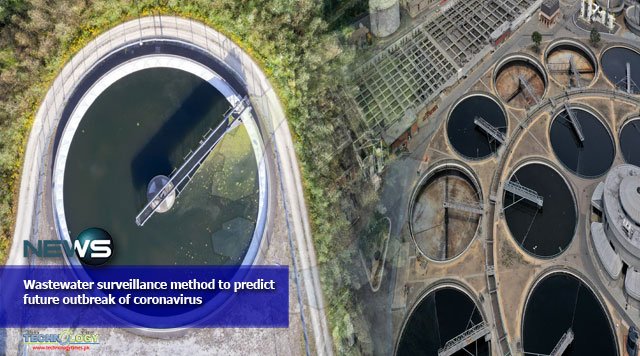Utilising polio environment surveillance network, Team of Pakistani scientists from (NIH) Islamabad has detected Coronavirus in wastewater

Saying this method can be used as an early warning system to prevent any future outbreak, The Nation has learnt.
The researchers, led by Dr Salman Sharif, conducted the study titled, “Detection of SARS-Coronavirus-2 in wastewater, using the existing environmental surveillance network: An epidemiological gateway to an early warning for COVID-19 in communities.”
“The result of the study, which is available online at MedRxiv, confirms that wastewater surveillance method may be helpful in monitoring viral tracking and circulation in cities with lower COVID-19 disease burden or heavily populated areas where door-to-door tracing may not be possible,” said Dr. Sharif while talking to The Nation.
The wastewater samples for the study were taken between March and April 2020 and the finding indicates that SARs-CoV-2 detection through wastewater surveillance has an epidemiologic potential and, if in place, this approach can prevent communities from facing any major viral outbreak in future.
The COVID-19 pandemic has so far killed 531806 people besides infecting 11301850 across the world. The disease affected 216 countries of the world. Pakistan has so far recorded 231813 confirmed cases and 4,762 deaths due to the virus.
Scientists believe that the life and financial losses caused by the COVID-19 pandemic to the world could have been prevented had there been an early warning system in place.
Scientists across the world are now working on wastewater-based epidemiology (WBE) approach, a new method to detect SARS-CoV-2 in the wastewater of communities infected with the virus. If successful, this method can provide an effective and rapid way to predict the potential spread of novel coronavirus pneumonia (COVID-19) through analysis of sewer samples carrying feces and urine of virus carriers.
In a recently published article in The Science Daily, Dr Zhugen Yang, Lecturer in Sensor Technology at Cranfield Water Science Institute, claimed that the WBE method may prove effective even when there were no signs of any outbreak. “In the case of asymptomatic infections in the community or when people are not sure whether they are infected or not, real-time community sewage detection through paper analytical devices could determine whether there are COVID-19 carriers in an area to enable rapid screening, quarantine and prevention,” he further stated in his article.
Dr. Sharif, while giving the details of the study, disclosed the research team used existing polio environment surveillance network in Pakistan to investigate presence of SARs-CoV-2. “Three commercially available kits and E-Gene detection published assay were used for surety and confirmatory of positivity,” he added.
The team took a total of 78 wastewater samples collected from 38 districts across Pakistan, 74 wastewater samples from existing polio environment surveillance sites, 3 from drains of COVID-19 infected areas and 1 from COVID 19 quarantine center drainage, to run the test.
“As many as 21 wastewater samples from 13 districts turned to be positive on RT-qPCR. Three samples were also taken from areas with COVID patients and quarantine center drainage and the findings strongly support the idea of using wastewater surveillance in future,” he noted.
In a likewise research project running since April 2020, a team of University of Barcelona succeeded to locate presence of the virus genome in wastewater sample taken on March 12, 2019. Scientists in Italy found traces of the new coronavirus in wastewater collected from Milan and Turin in December 2019 – suggesting COVID-19 was already circulating in northern Italy before China reported the first cases. Similarly, the researchers in many other countries like Australia, Netherlands and France have also confirmed in their studies that the virus that causes COVID-19 can be detected in sewage, prompting other countries to follow the WBE approach.
This news was originally published at nation.com.pk